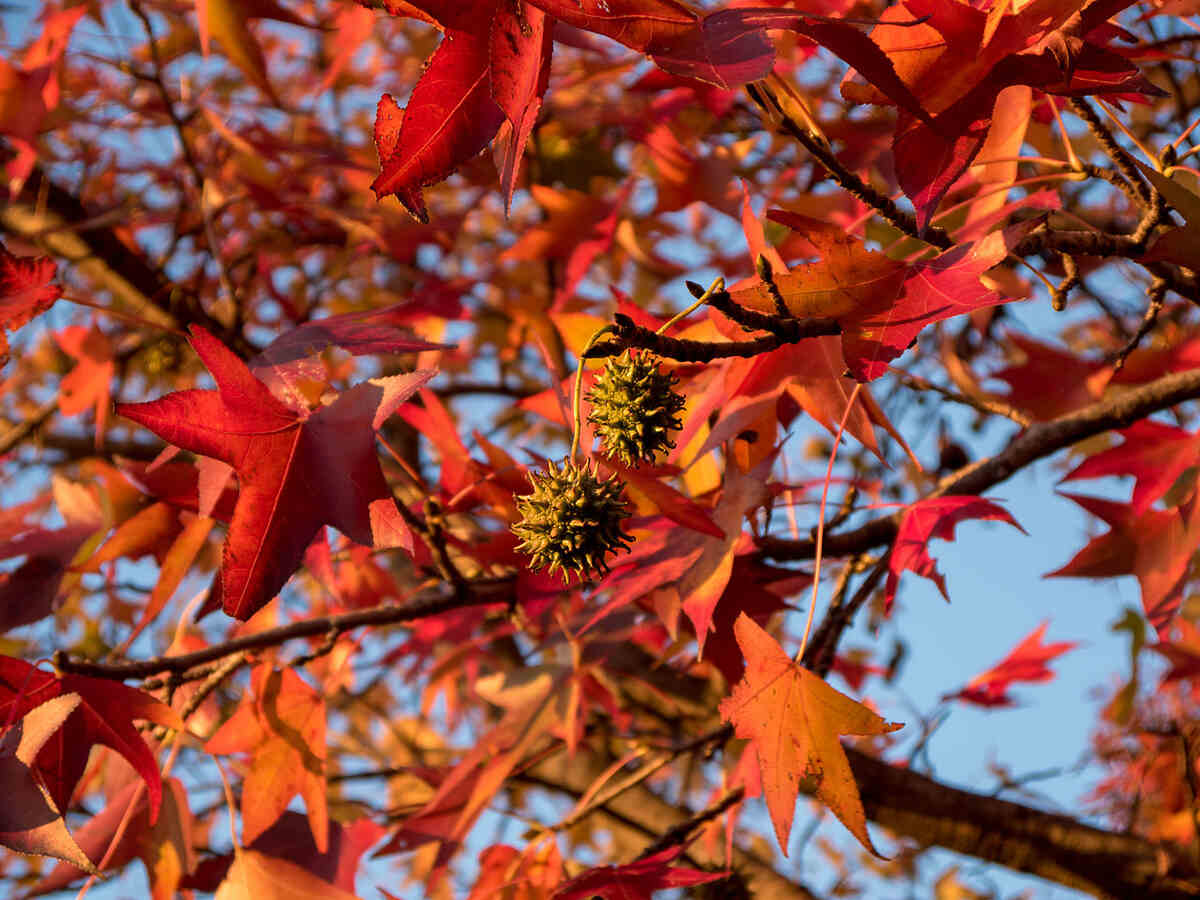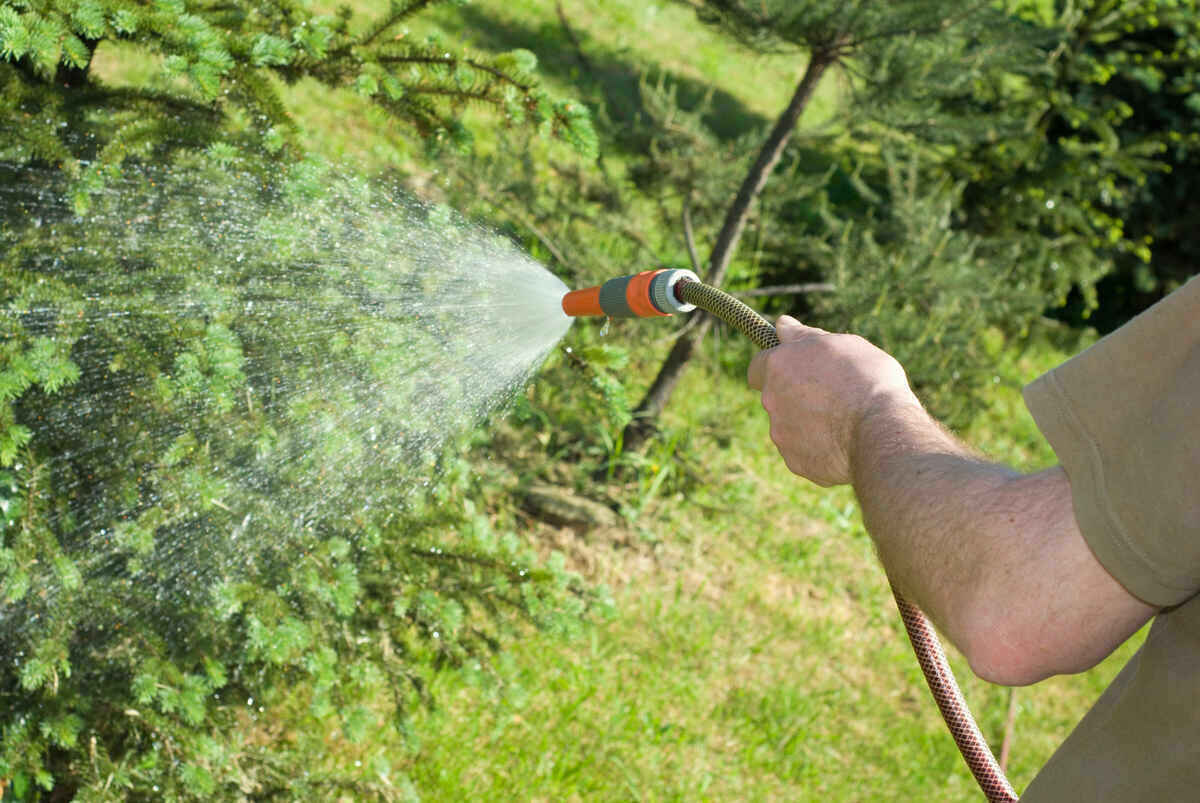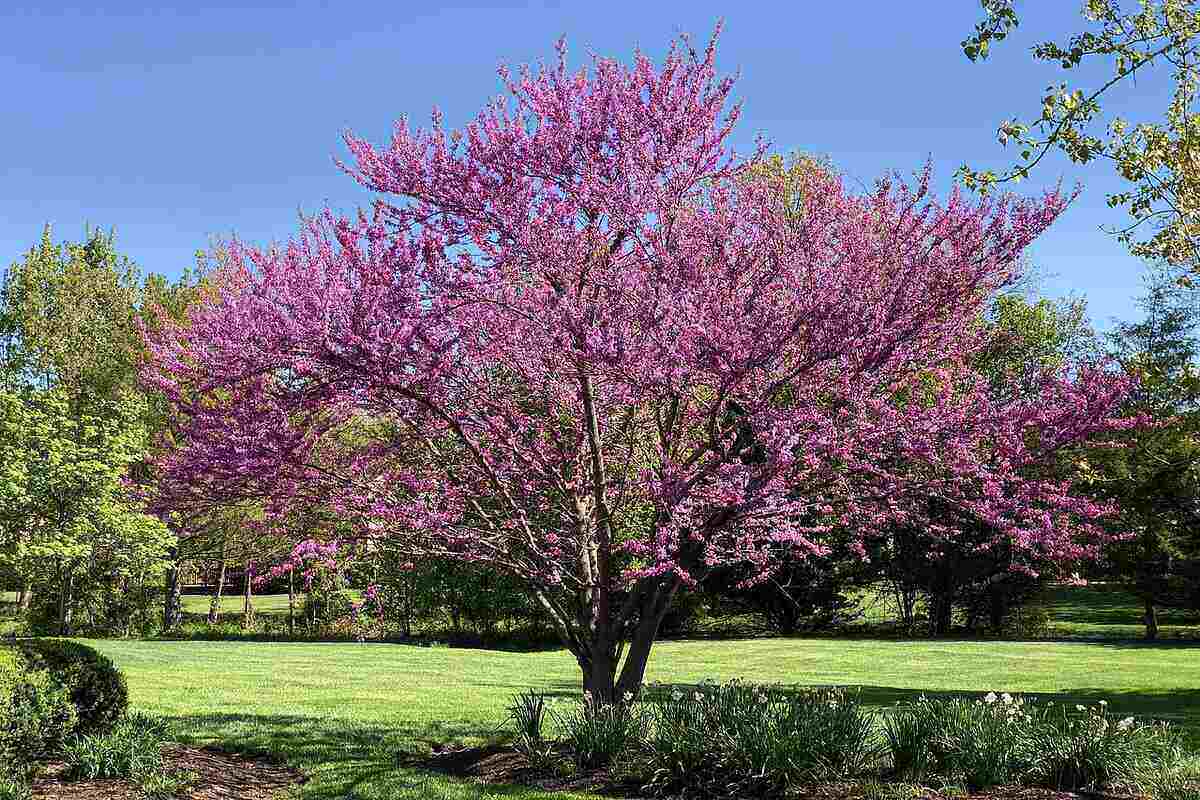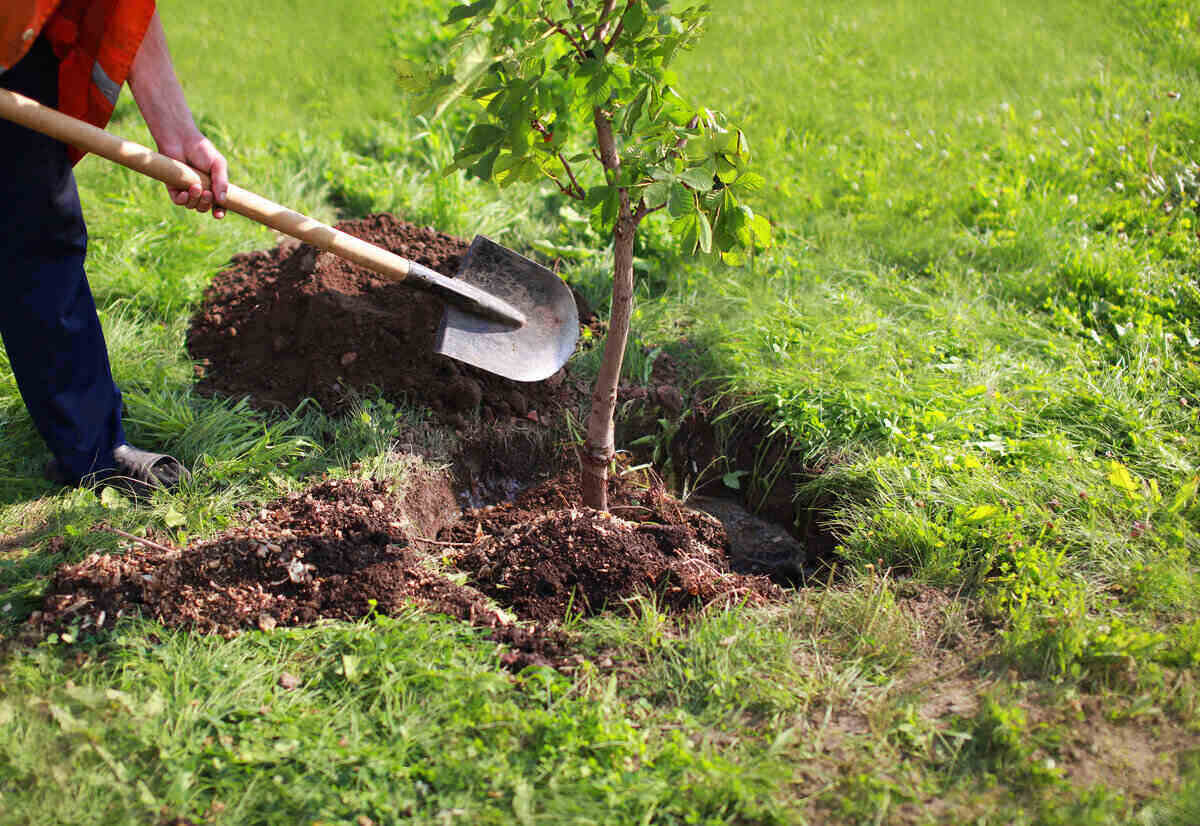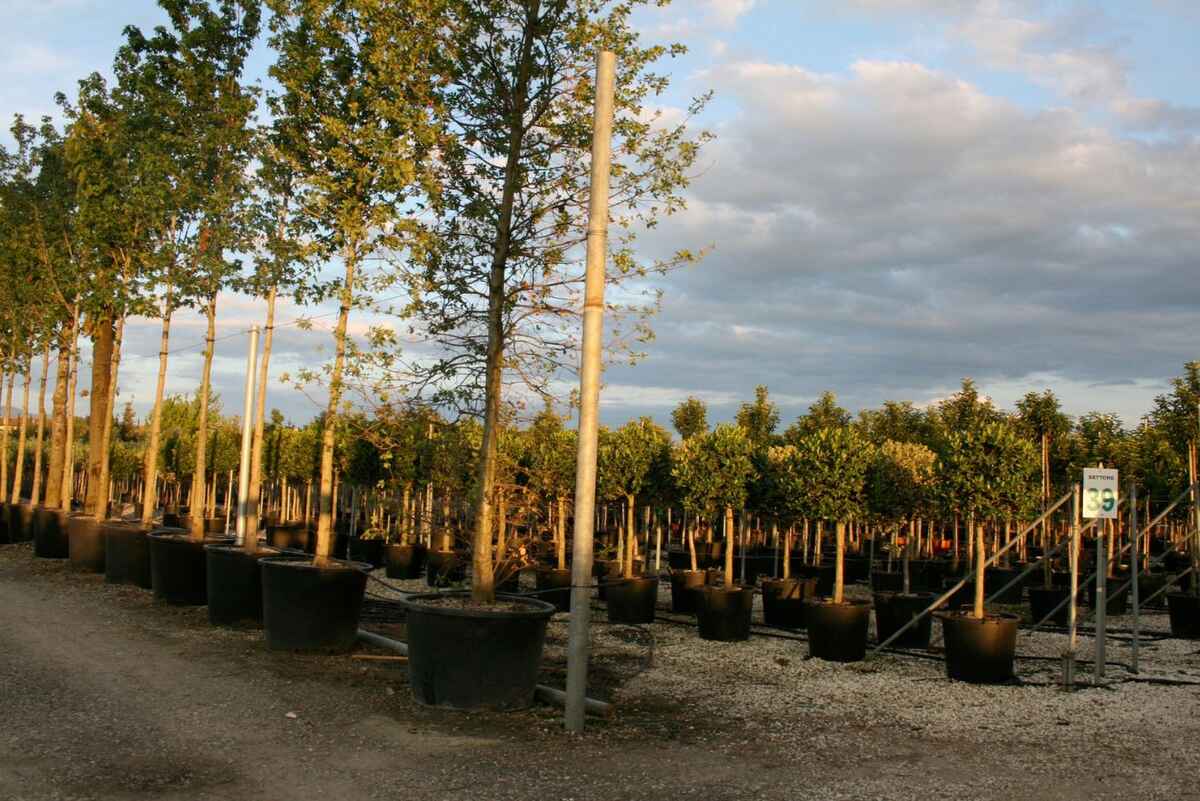
The key to having a beautiful, long-lasting tree is to start with a healthy one. Healthy trees improve your home’s curb appeal and are one of the best investments you can make as a homeowner. But there’s a lot that goes into choosing the right tree, so you’ll want to know all the tips for choosing a tree at your local nursery.
Nursery trees give you great value and the best return on investment. Many arborists own or work in nurseries and use their knowledge and skills to raise saplings that grow to maturity without issues. Choosing nursery trees gives you the best chance of getting trees that will survive planting in your yard.
What is a Nursery Tree?
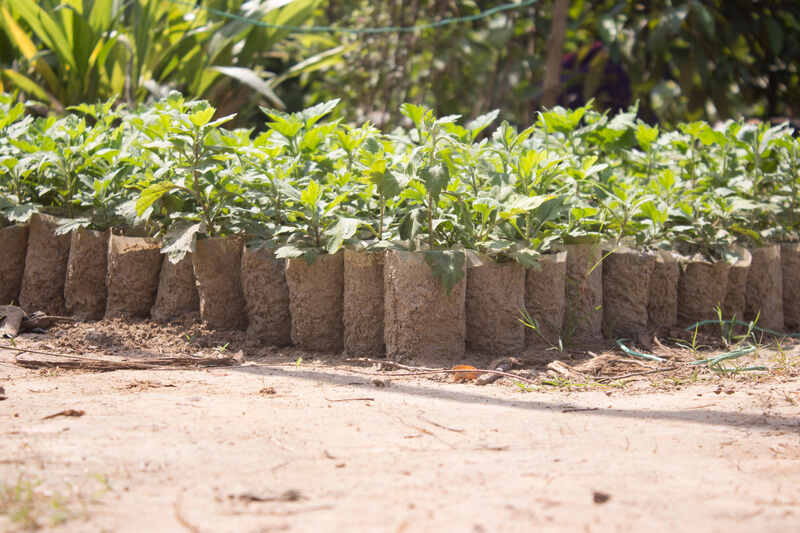
Healthy trees grown in a nursery have a higher survival rate than planting bare seeds on your lot. Nursery trees are bred from healthy trees that are naturally resistant to disease and drought. Some nursery trees begin from seeds, while others are from cuttings.
Things to Consider Before Selecting a Tree
When selecting a tree from a nursery, there are three things to consider that will give you the best outcome:
- Site conditions in your yard
- The tree’s function or purpose
- The tree’s mature shape and size
Let’s closely consider each factor:
Site Conditions
Several things can impact the health of a newly planted tree. When selecting a nursery tree for your property, think about the following things:
- Soil conditions
- Sun and wind exposure
- Drainage
- Space
- Hardiness zone
- Human activity
- Insect and disease susceptibility
- Power lines and utility lines
- Other existing landscape and architecture or future landscape plans
Knowing where you’re going to plant your new tree is essential. You’ll be much better equipped to discuss tree selection with the nursery staff when you have a site analysis. Work with a local landscaping pro to determine which trees will thrive in your backyard.
Tree Function
Think about the purpose of your tree. Are you adding a tree for beauty, privacy, shade, or as a windbreak? A flowering tree is a great option if you want to add beauty. Evergreens work great as a windbreak or privacy fence, and large deciduous trees will provide shade to keep your house cool during the summer.
Here are some other reasons you may want to plant a tree:
- Enhance your landscape design
- Define property lines
- Aid in privacy and security
- Grow fruit
- Create wildlife habitat
Tree Shape and Size
It’s important to consider the size of the tree at the time of planting and its size at maturity. A tree that is too large for its setting does more harm than good. Planting the right tree in the right place significantly reduces maintenance costs and will increase your property value. You should always keep the mature size of the tree in mind to avoid it hitting homes, power lines, underground utilities, sidewalks, driveways, or other existing landscape features.
How to Select a Healthy Tree
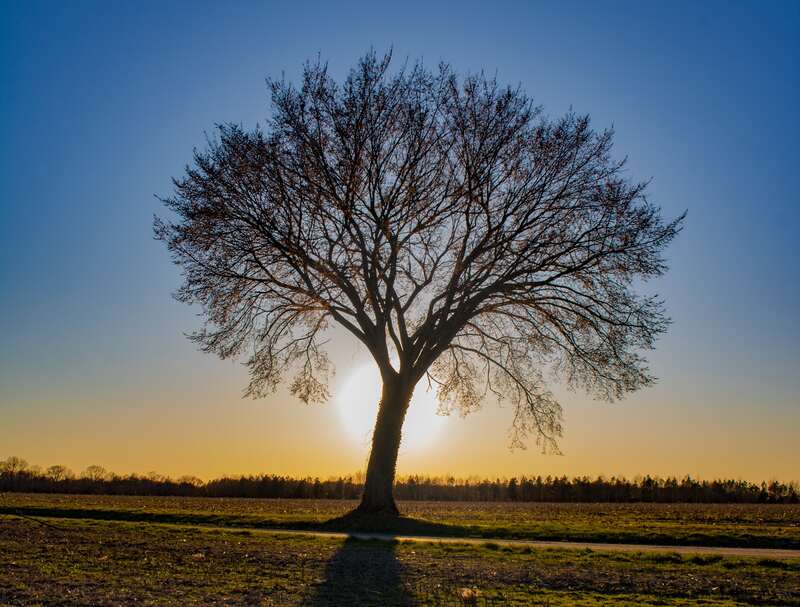
Tree health starts with how the nursery or garden center cares for its young trees. It’s important to know how to tell if a tree is healthy by inspecting it top to bottom. Pay attention to the tree’s appearance.
A healthy tree will have the following traits:
Branches
- Branches pruned perpendicular to the branch length
- Few dead branches and twigs
- Evenly spread branches
- Wide angles between the trunk and branches
- Evenly rotated branches around the trunk
- No scarring on branches
- Well-distributed branches spaced between 8 and 12 inches apart
Trunk
- No wounds or blemishes on the bark
- No scarring on the trunk
- Well-developed top leader (the vertical stem located at the top of the trunk)
- Single top leaders
- Trunks that taper uniformly
Leaves
- No brown, curly leaves or needles
- No signs of insects, such as blotching or holes on leaves
- Evenly distributed foliage
Roots
A simple way to estimate root strength is to use the flex test. Hold the ball or container and push on the tree trunk. You want the roots to stay firm, and the trunk bends or flex. But if the trunk remains rigid and the roots flex, pick a different tree.
Here are some other signs to look for when examining the roots of a nursery tree:
- Check that there are no circling roots, which are a sign that a tree has outgrown its container. A tree with circling roots will need to have its roots pruned before it can be planted.
- Are the root ball dimensions proportionate to the tree height? As a rule of thumb, a root size 32 inches in diameter should have a trunk that is 12 to 16 feet with a 3-inch caliper.
- If you can’t see the root collar 1 inch above the soil or if it’s too high above, that’s a sign of poor health.
- Are the roots girdling the stem of the tree? When the tree roots wrap around the trunk like this, the tree is strangling itself and can make the wood vulnerable to disease and insects.
Signs of an Unsuitable Tree

Although nurseries cultivate healthy trees for the public, some trees may be unfit for planting. If you notice any symptoms of poor plant health, avoid purchasing that particular tree.
Here are several signs to look out for:
- Swelling trunk or branches
- Holes in the tree trunk from improper pruning
- Dead, dying, and low-hanging branches
- Branches that grow together
- Spots or holes on leaves
- Asymmetrical branches
- Severed roots
- Stem-girdling roots
- Circling roots
All of these can lead to tree death after planting.
How to Safely Transport Your Tree Home
You’ll want to keep your newly picked nursery tree healthy when bringing it home. Placing a new tree in the back of a truck can expose it to wind damage. You could still strip or snap the branches even if you drive slowly.
If you’re transporting your new tree in a truck, lay the tree down flat with the branches toward the tailgate and the root ball toward the cab. Cover the branches with a sheet or tarp to protect them. If you’re using a car, van, or SUV, keep your tree inside and avoid sticking it out the window or sunroof.
Roughly handling your new tree can ruin it and set it up for failure. You should always lift and carry your tree by the bucket- never lift your tree by the trunk!
FAQ About Choosing a Nursery Tree
Because small trees experience less root loss when transplanted, they establish themselves more quickly, usually overtaking their larger counterparts after just a few years. This makes small trees the best option for planting.
Purchase and plant trees between November and March. Bare-root trees (trees that are dug and stored without any soil around their roots) and root-balled trees (trees that are stored with soil) are only available in autumn and early winter, and they should be planted immediately.
You can delay planting for up to two or three weeks if you are able to keep the roots from drying out. If you don’t plant it for more than a week after bringing it home from the nursery, you should apply damp paper to bare-root tree roots to provide enough moisture for longer storage.
When to Call a Tree Care Pro
If you’re not confident in your ability to select a healthy nursery tree, you might be happier hiring a reliable tree care expert.
If you need an experienced tree service to handle all of your tree, shrub, and lawn maintenance needs, check out Lawnstarter’s extensive list of landscaping contractors in your area.
Main Image Credit: felix_ro / Canva Pro / License

